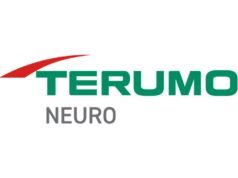
Two peer-reviewed studies recently published in Neurosurgery and Operative Neurosurgery have shown statistically significant data in favour of the BrainPath approach (NICO), citing more than 95% clot reduction, the ability to walk in 94% of patients (mRS 0-3 at 30-365 days), and no mortalities in one study with patient groups suffering from haemorrhagic stroke.
Both studies—one a prospective single-centre study conducted by the Cleveland Clinic (Cleveland, USA) and the other a retrospective multicentre study with 11 US institutions that included Johns Hopkins, Emory, NorthShore, Indiana University, and Houston Methodist—conclude that the BrainPath approach was safely performed in all patients with a high rate of clot evacuation and a statistically significant improvement in clinical outcomes and functional status and a meaningful reduction in mortality.
“The inertia has been against aggressive surgical intervention for this disease, but there has also been a constant pressure for progress for this group of patients who have had very bleak recovery or survival odds,” says Mark Bain, neurosurgeon at The Cleveland Clinic, in the prospective study published in Operative Neurosurgery. “There has been a need to have data supporting this approach in order to take the big jump for changing how quickly we address haemorrhagic stroke and how we approach it. This is the first step.”
Both studies validate the importance of appropriate patient selection and standardising the approach to early surgical intervention of haemorrhagic stroke, as well as standardising the training and technology used, says Jim Pearson, president and chief executive officer of NICO.
“Haemorrhagic stroke appears to be following in the footsteps of ischaemic stroke, with these significant clinical advancements now being published in well-respected neurosurgery journals,” Pearson says. “What is emerging is unique and there is no other technology available that allows for access to the brain using a trans-sulcal surgical approach. We can see the market of treatable patients evolving and getting larger for haemorrhagic stroke because now we can intervene quickly and stop the active bleed—something not possible before.”
In the Cleveland Clinic study with 18 patients published in Operative Neurosurgery, data were clinically significant and identified a treatable patient population larger than previously reported. Key highlights of the study showed successful identification and management of the bleeding vessel in 65% of cases, an average of 95.7% clot removal, improved median Glasgow Coma Score (GCS) score from 10 to 14, zero re-bleeds throughout the time of follow up, and significantly reduced 30-day mortality rate.
These results are consistent with the multicentre study with 39 patients published in Neurosurgery that showed greater than 90%clot reduction in 72% of patients. The median GCS improvement from 10 to 14 was statistically significant and no mortalities occurred as a result of the surgery, even with a pre-operative ICH score of 2.
To further investigate these early study findings, NICO has partnered with two of Atlanta’s (USA) comprehensive stroke centres associated with Emory University School of Medicine to perform a randomised controlled trial called ENRICH, which will evaluate the clinical effectiveness of early surgical intervention using BrainPath following spontaneous ICH. The Emory Stroke Center of Emory University hospitals and the Marcus Stroke & Neuroscience Center of Grady Memorial Hospital will lead the 15-centre trial, ultimately comparing the outcomes between early intervention of clot evacuation in 24 hours or less and medical management of ICH. The trial is slated to begin this year with approximately one year for patient enrolment and six months of patient follow up.










